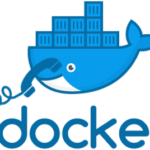Docker has three types of data mounts that can help – volumes, bind mounts, and tmpfs. Volumes store data in the host’s filesystem but it is managed by Docker. Bind mounts help store data anywhere on the host system and users can directly modify the files from the host’s own processes. The tmpfs mounts are stored in the host’s memory only. Docker volumes are the best option because they are the safest to use.
How to Use Docker Volumes
Let’s try out a hands-on example. We are going to create a few Ubuntu containers that share the same volume.
First, we want to create the volume with the following command:
Now we can check if the volume exists:
DRIVER VOLUME NAME
local my-common-vol
We can further inspect the volume to check its properties:
[
{
"CreatedAt": "2018-04-06T07:43:02Z",
"Driver": "local",
"Labels": {},
"Mountpoint": "/var/lib/docker/volumes/my-common-vol/_data",
"Name": "my-common-vol",
"Options": {},
"Scope": "local"
}
]
It’s important to remember that Mountpoint is actually inside the VM that docker is running on. So, it’s not directly accessible.
Now let’s start our first server with my-common-vol.
(Note for the docker run command, you can use the –mount and –v options to mount a volume. The syntax of the two is different. We will use the latest –mount option as it is the latest.)
We are mounting my-common-vol to /app folder on the server1 docker container. The above command should log you into the ubuntu server1. From the command line go to the /app folder and create a file:
root@1312ea074055:/app# ls
root@1312ea074055:/app# touch created-on-server1.txt
root@1312ea074055:/app# ls
created-on-server1.txt
So we have the file created-on-server1.txt in the /app folder.
Let’s go create a second server and mount the same my-common-vol volume to it:
Now we can go to the /src folder in server2, check for server1 files and create a new file:
root@77cd51945461:/src# ls
created-on-server1.txt
root@77cd51945461:/src# touch created-on-server2.txt
root@77cd51945461:/src# ls -1
created-on-server1.txt
created-on-server2.txt
In the /src folder, we see that created-on-server1.txt already exists. We add created-on-server2.txt. We can check back on server1 and see that created-on-server2.txt shows up.
Let’s start a new container server3 that will only have read-only access to the volume my-common-vol:
So we have created server3 with my-common-vol mounted to /test.
Let’s try to write something in /test:
root@a6620da1eea1:/test# ls -1
created-on-server1.txt
created-on-server2.txt
root@a6620da1eea1:/test# touch created-on-server3.txt
touch: cannot touch ‘created-on-server3.txt’: Read-only file system
You can see that we can’t write to my-common-vol from server3.
You can delete volumes. But you have to remove all the associated containers before you can attempt. Otherwise, you’ll get an error like this:
Error response from daemon: unable to remove volume: remove my-common-vol:
volume is in use – [1312ea07405528bc65736f56692c06f04280779fd283a81f59f8477f28ae35ba,
77cd51945461fa03f572ea6830a98a16ece47b4f840c2edfc2955c7c9a6d69d2,
a6620da1eea1a39d64f3acdf82b6d70309ee2f8d1f2c6b5d9c98252d5792ea59]
In our case, we can remove the containers and the volume like this:
$ docker container rm server2
$ docker container rm server3
$ docker volume rm my-common-vol
Also, if you want to mount multiple volumes, the “docker run” command’s –mount option allows that too.









